January 2020 Land Science Newsletter
About the Presenters:
|
 |
A&WMA 2020 Annual Seminar1/23/2020, Buffalfo, NY |
 |
SAME Small Business Day2/6/2020, Waltham, MA |
 |
Alaska Forum on the Environment2/10 – 2/14/2020, Alaska, AK |
 |
Emerging Contaminants Summit3/10 – 3/11/2020, Westminster, CO |
 |
30th Annual International Conference on Soils, Water, Energy, and Air3/16 – 3/19/2020, San Diego, CA |
Questions?REGENESIS has remediation experts based worldwide to assist you in your brownfield site cleanup. As the technology leader in advanced bioremediation solutions, we can help ensure success on your next remediation project. Use the map on our website to find your regional REGENESIS contact today. |
ques
Client Spotlight: Prem Neupane, Program Manager with Apex Companies, LLC
 As an experienced Program Manager with Apex Companies, LLC, a leading environmental services firm and valued Land Science® client, Prem Neupane has an ongoing appreciation for seeing firsthand how his efforts and those of Apex can make a difference in site cleanup. “When I compare the before and after activities at the remediation site,” he says, “Especially those in the State Voluntary Cleanup Program, Brownfield program and sites located in urban areas, our project work continues to provide me with great satisfaction.” With 18 years of experience at Apex, first as an Environmental Scientist, then as a Project Manager and now as a Program Manager, Neupane has been involved in a diverse range of remediation projects. In his current role, he manages several clients, participates in business development, and manages all aspects of his project work- from initiation to close-out. He shares, “I like interacting with clients, our trusted vendors and suppliers/lab, and fellow Apexians, and ultimately finding the optimum solutions for environmental remediation problems.” Prior to joining Apex, Neupane performed a year-long internship with the USGS in Dover, DE working on the Air Force Base projects. To prepare for a career in environmental science he earned a BS in Environmental Science from Troy University, followed by a MS in Science and Water Resources at Miami University in Ohio. He continues, “I became interested in the environmental field during high school. After completing my undergrad studies at Troy University, I went straight to graduate school to further enhance my knowledge on environmental issues. While working on my Master of Science at Miami University, I was able to take a few advance level courses in contamination, and shifted my focus toward environmental characterization and remediation. Aside from seeing projects through to fruition, it’s the interdisciplinary nature of this field that interests me the most.”
As an experienced Program Manager with Apex Companies, LLC, a leading environmental services firm and valued Land Science® client, Prem Neupane has an ongoing appreciation for seeing firsthand how his efforts and those of Apex can make a difference in site cleanup. “When I compare the before and after activities at the remediation site,” he says, “Especially those in the State Voluntary Cleanup Program, Brownfield program and sites located in urban areas, our project work continues to provide me with great satisfaction.” With 18 years of experience at Apex, first as an Environmental Scientist, then as a Project Manager and now as a Program Manager, Neupane has been involved in a diverse range of remediation projects. In his current role, he manages several clients, participates in business development, and manages all aspects of his project work- from initiation to close-out. He shares, “I like interacting with clients, our trusted vendors and suppliers/lab, and fellow Apexians, and ultimately finding the optimum solutions for environmental remediation problems.” Prior to joining Apex, Neupane performed a year-long internship with the USGS in Dover, DE working on the Air Force Base projects. To prepare for a career in environmental science he earned a BS in Environmental Science from Troy University, followed by a MS in Science and Water Resources at Miami University in Ohio. He continues, “I became interested in the environmental field during high school. After completing my undergrad studies at Troy University, I went straight to graduate school to further enhance my knowledge on environmental issues. While working on my Master of Science at Miami University, I was able to take a few advance level courses in contamination, and shifted my focus toward environmental characterization and remediation. Aside from seeing projects through to fruition, it’s the interdisciplinary nature of this field that interests me the most.”
With nearly 20 years of experience in the environmental industry, Neupane takes great pride in his work, while continuing to focus on the company’s long-term goals, which include the practice of utilizing sustainable remediation technologies. He continues, “At Apex, our plans are to strategically grow the company by harnessing the power of innovation, especially in the use of green remediation. We continually invest in leading-edge, sustainable remediation technologies and in remediation experts who can develop and deploy them. Beyond our use of evaporative desorption technology (EDT), ex-situ on-site bioremediation, cryogenic vapor treatment technology (CVTT), and remote station soil vapor extraction (SVE) – which are just a few ways we help our clients move to more effective results –we plan to adopt and deliver more efficient, practical, and sensible remedial strategies that continue to benefit our clients and communities.” When it comes to working with Land Science®, he continues to be impressed with their client service, responsiveness, and their ability to provide assistance with product recommendations that fit a variety of challenges and situations. He points out that on a recent project, and on short notice, Land Science® met the Apex team at the job site to discuss solutions for an existing issue. As for which Land Science® products Apex uses, two come to mind. He shares, “Geo-Seal® and Retro-Coat™ vapor intrusion coating are those we have used the most. However, we are open to the new products Land Science® has rolled out recently. Geo-Seal® is a composite vapor intrusion barrier system that consists of chemical resistance high density polyethylene (HDPE) and spray applied asphalt latex. It is ideal for installation on new construction. Retro-Coat™ consists of chemically resistant material that is applied to existing structures to prevent potential vapor intrusion risks. I like them both because they are relatively easy to apply, are compatible and effective with VOCs from petroleum as well as chlorinated solvents sources, and they are very popular and well liked by regulators.”
When asked about the future of environmental remediation, including trends on the horizon, Neupane points to advancements in technology that enable more accurate targeting of contamination in subsurface and faster analysis. He also expects to see more cost-effective solutions, greener cleanups and green remediation to minimize the environmental “footprint” of remediation activities, emerging contaminants, and vapor intrusion solutions. He notes that the EPA describes green remediation as “The practice of considering all environmental effects of remedy implementation and incorporating options to maximize net environmental benefit of cleanup actions.” He continues, “Some local and state regulatory agencies, such as the Department of Energy & Environment (DOEE) in Washington, DC, are encouraging responsible parties to consider and report green remediation strategies for remediation sites. Green remediation allows us to reduce the environmental footprint of a cleanup project.” To stay abreast of emerging technologies and trends, Neupane regularly attends seminars and training modules, and participates in webinars offered by remediation industries and coalitions, such as those offered by the Interstate Technology & Regulatory Council (ITRC). He shares a recent example of a training seminar he attended in May of last year, “I attended Vapor Intrusion (VI) & Soil Gas Training provided by Dr. Blayne Hartman of Hartman Environmental Geoscience, at Argonne National Laboratory in Chicago. The training was very informational and covered the latest in regulatory, assessment, sampling, analysis and mitigation, as well as legal considerations.” When prompted about the most challenging aspect of his work, he feels accounting for project uncertainties and including contingencies to complete the remediation work on budget and on time can be difficult. “Weather can also be a challenge sometimes,” he says, “Especially with large scale water related projects during winter months.”
Currently residing in Chicago, with his wife and daughter, Neupane works out of Apex’s downtown Chicago office, and frequently travels to the company’s Washington, D.C. region for project work and meetings. In his free time, he enjoys hiking, biking, and visiting new places with his family. He shares, “Having grown up in Nepal, I was always drawn to the beauty of the Himalayas. I visit Nepal and try to hit the hiking trails there whenever possible. I was in Nepal just this past October with the family and did some hiking near Mt. Annapurna (10th tallest mountain). Whenever I travel to a new place I seek out nearby hiking/biking trails.” And how would he encourage others to join his field of study? He concludes by emphasizing the potential long-term contributions that his profession makes possible. “Remind those who may be interested that they can make a positive impact on human health and the environment. Look at the bigger picture and think of your contribution to future generations.”
Land Science® is proud to have Prem Neupane, Project Manager for Apex Companies, as a valued client and partner in environmental remediation, and appreciates his expert knowledge and experience in providing successful remediation outcomes for Land Science® and its clients.
December 2019 Land Science Newsletter
|
A Cost-Effective Barrier with Superior Constructability
The Original Composite Barrier System Adapted from Waterproofing Materials
As risk standards and other compliance issues associated with contaminant vapor intrusion continually evolve, engineered controls like those offered by Land Science provide a practical, cost effective solution to eliminate risks. Recent advances in contaminant vapor intrusion mitigation developed by Land Science have assisted developers, engineering firms, regulators, and land owners by providing technically sound solutions effectively mitigating these issues. Download the brochure to learn more about vapor intrusion solutions.
Upcoming Events
|
|
November 2019 Land Science Newsletter
|
|
Client Spotlight: Ron Carroll, Owner and Managing Principal of ATON LLC
 For Ron Carroll, owner and Managing Principal of ATON LLC, an environmental consulting and engineering firm and valued Land Science® client, choosing a career in environmental remediation was both a personal and professional choice. That’s because when he was younger, Mr. Carroll lived near and had friends who were impacted by the Times Beach dioxin cleanup project in the St. Louis area. As a result of toxic chemicals being mixed with oil and applied to roads for dust control, a massive cleanup was initiated in a small town in St. Louis County. Consequently, the EPA ended up buying many of the homes within the town to facilitate an effective cleanup in the area. Understandably, this environmental hazard and subsequent remediation project left an indelible impression on Mr. Carroll, and he eventually pursued and earned a B.S. in Environmental and Hazardous Materials Management, and a B.A. in Biology, from the University of Findlay. In addition to his university degrees, he also became a Certified Hazardous Materials Manager and Certified Industrial Hygienist. His university studies and professional work experience that followed would eventually culminate in forming ATON, where he oversees the firm’s business activities. He shares, “I’m responsible for managing our environmental, health and safety consulting work, and all administrative operations. I also conduct and oversee site inspections, multi-media sampling, coordination and negotiation with regulatory agencies, facility decommissioning, demolition, and regulatory reporting.” Prior to forming ATON eight years ago, Mr. Carroll held management positions with a national due diligence and real estate assessment company performing environmental, building sciences, and valuation services; and a national environmental engineering consulting firm that provided site investigation, industrial hygiene, remediation, and regulatory compliance services.
For Ron Carroll, owner and Managing Principal of ATON LLC, an environmental consulting and engineering firm and valued Land Science® client, choosing a career in environmental remediation was both a personal and professional choice. That’s because when he was younger, Mr. Carroll lived near and had friends who were impacted by the Times Beach dioxin cleanup project in the St. Louis area. As a result of toxic chemicals being mixed with oil and applied to roads for dust control, a massive cleanup was initiated in a small town in St. Louis County. Consequently, the EPA ended up buying many of the homes within the town to facilitate an effective cleanup in the area. Understandably, this environmental hazard and subsequent remediation project left an indelible impression on Mr. Carroll, and he eventually pursued and earned a B.S. in Environmental and Hazardous Materials Management, and a B.A. in Biology, from the University of Findlay. In addition to his university degrees, he also became a Certified Hazardous Materials Manager and Certified Industrial Hygienist. His university studies and professional work experience that followed would eventually culminate in forming ATON, where he oversees the firm’s business activities. He shares, “I’m responsible for managing our environmental, health and safety consulting work, and all administrative operations. I also conduct and oversee site inspections, multi-media sampling, coordination and negotiation with regulatory agencies, facility decommissioning, demolition, and regulatory reporting.” Prior to forming ATON eight years ago, Mr. Carroll held management positions with a national due diligence and real estate assessment company performing environmental, building sciences, and valuation services; and a national environmental engineering consulting firm that provided site investigation, industrial hygiene, remediation, and regulatory compliance services.
When asked what he likes most about his work, Mr. Carroll points to the benefits that result from consistent teamwork. He continues, “I enjoy interacting on a daily basis with our employees and clients to find sound technical solutions to challenging problems. I also take satisfaction as a mentor to technical staff and as a trusted advisor to our clients in the commercial and industrial sectors.” And the most challenging aspect of his work? “Keeping track of ever-changing regulations and how those regulations affect our business and our clients’ business. While it can be challenging, we feel we’re well-equipped. We’re looking to continue our growth organically by adding key technical staff and expanding geographically. We also see the redevelopment of brownfields as a significant growth area for the company.” When it comes to working with Land Science, Mr. Carroll appreciates the combination of innovative solutions and service ATON receives on a consistent basis. He continues, “Land Science continues to provide a quality product with seamless technical expertise, and this helps in the design and implementation phases of our remedial work. We were recently involved in the relocation and development of a large scale, commercial laundry operation in the St. Louis region that involved the construction of a building over a former chemical plant that is highly regulated by the EPA. The success of the redevelopment using Land Science products led to the continued development of industrial warehouse space near the former plant. In essence, the Land Science solutions form a complete package that typically exceeds our design specifications.”
Residing in St. Louis, with his wife and two children, Mr. Carroll likes to spend his free time with his family, enjoying the outdoors, traveling, and attending various sporting events. “We have a great baseball team, the St. Louis Cardinals,” he says, “and the Stanley Cup hockey champs, the St. Louis Blues.” He also finds time to give back to his community as a volunteer for Habitat for Humanity. To stay abreast of emerging trends and new technologies, ATON offers all its employees continuing education and technical training for environmental, health & safety (EHS) consulting and remediation work. When asked how he he’s seen the industry change, his focus turns to the advancements made possible through innovation. He continues, “We’ve seen technical innovation working its way into what historically has been a labor-intensive industry. In the past we’ve relied on field sample collection and off-site analysis for environmental contaminants. More recently, we’re able to use smaller and lighter field instruments to detect and analyze contaminant concentrations without having to send samples to a laboratory. In addition, innovations in data collection and management have allowed us to compile data and issue reports much quicker, which in turn allows our clients to make more informed and faster decisions on tight timeframes.” Asked what he sees the future holds for environmental remediation, he feels the consulting side of the business will continue to grow. He shares, “We see the traditional EHS consulting field continuing with strong growth. The environmental remediation industry also continues to grow through local, state, and national brownfield development initiatives.” And how would he encourage others to join his field of study? He concludes, “Education and training in STEM are keys to our success and growth. I would encourage others interested in science and the environmental field to become STEM practitioners and supporters as a way to enter this industry.”
Land Science is proud to have Ron Carroll, Managing Principal of ATON, as a valued client and partner in environmental remediation, and appreciates his vast experience and knowledge base in providing successful remediation outcomes for Land Science and its clients.
October 2019 Land Science Newsletter
|
|
Questions?REGENESIS has remediation experts based worldwide to assist you in your brownfield site cleanup. As the technology leader in advanced bioremediation solutions, we can help ensure success on your next remediation project. Use the map on our website to find your regional REGENESIS contact today.
|
Four Facts You Should Know About Vapor Intrusion
Vapor intrusion is the migration of vapor-phase contaminant chemicals from a subsurface source in an overlaying building or structure. The objective of many vapor intrusion investigation professionals is to be able to detect possible pathways for contaminant vapors and their location within the building or structure. Understanding the potential pathways helps to identify risks. A solid understanding of potential pathways informs the client selling the building to potential tenants, who need to be able to live and function within the building without exposure to health risks. Here are four key things to know about vapor intrusion.
It’s A Process
Number one, vapor intrusion investigation and mitigation is a process. Vapor intrusion science requires in-depth investigation. It is not a field which requires only one test to say whether a building does or does not have vapor intrusion. In-depth investigation includes options based on the site and its environment. The in-depth investigation must determine what type of gases are emitting through the cracks, where the origin and the major intrusion pathway are located. Additionally, the consultant’s next step is contacting the local government environmental representative to confirm the state’s regulatory guidelines and to receive approvals for developing the site. Even after all the preparation work and investigations, the environmental consultant will have to develop a design to cover the exact needs of the site. There is no quick way to handle vapor intrusion. Each site must be evaluated thoroughly to move onto the next step to mitigate the effects of the vapor intrusion.
Recognize Outside Factors
Though thorough investigation is necessary to get an accurate reading of the site, the results may not be complete. At times investigations or screenings of a site will pick up additional vapors from the testing area or concentrated in one single area to indicate contaminants present. These readings could be caused by a number of factors, even common household appliances on site. For example, if an industrial adhesive product like E6000 glue is located anywhere in the screening area, there will be a significant increase in TCE indicated in the testing, which would easily skew the readings. So, Before any screening can be performed on site, investigators should go through the site with a close eye looking for indoor VOC sources, like paints, cleaning supplies, or insecticides. For more information, visit the EPA’s website regarding the specific materials to look for in a site, along with other information to address VOC concerns is a great resource: https://www.epa.gov/indoor-air-quality-iaq/volatile-organic-compounds-impact-indoor-air-quality.
In a webinar with Land Science, and the Compound Specific Isotope Analysis (CSIA) Lab Director of Microbial Insights provides some tools to help distinguish whether the source of vapor-contaminated indoor air originates from the buildings subsurface or an indoor source.
There are other uncontrolled factors that could contribute to excessive readings, including spatial and temporal variability. Some examples of spatial variability factors to consider are soil types like gravel or sand, bedrock fractures, oxygen distribution in the soil, subsurface building structures and even surface features like pavement or water features. Each of these examples either provide a clear path for VOCs to reach the site or the groundwater or affect how quickly VOCs could reach the site. Examples of temporal variability include: wind speed and direction, barometric pressure, temperature inside or outside, precipitation, and ambient contaminants. These variables can affect how the screenings read the concentrations of VOCs at the site.
Solutions Are Site Dependent
Vapor mitigation professionals are also tasked with developing a solution based on the site’s conditions along with the state/federal regulations. Each site is different, so vapor mitigation often cannot be based on a plan used at a former site with similar conditions. The investigations unveil all the aspects of a site that determine what the remediation plan will be, including: soil types, weather patterns, gas distributions, subsurface conditions, as well as site goals and budget. Each one of these factors can impact the design of a vapor mitigation system, and each factor can yield different results.
Land Science is comprised of a team of vapor intrusion mitigation professionals who have the technical expertise and industry experience to make the most effective recommendations for our clients. Couple that with a range of innovative technologies that address a variety of site types, and the result is industry-leading vapor intrusion solutions that help public safety.
It’s a Growing and an Evolving Science
The final key idea behind vapor intrusion science that everyone should know, it is a growing and an evolving science. The reason vapor intrusion science came into existence was because of the avid use of VOCs—volatile organic compounds–as root zone fumigants and other applications in the 1950s. Surveys of landfill gas and radon exposure in the 1960s lead to the discovery of vapor intrusion in the late 1970s and was found to affect indoor air quality at heavily contaminated sites, which brought the full scope of regulatory attention.
However, at this point, scientists and regulators dismissed the concerns to homeowners due to the processes of dilution and attenuation as well as the ambiguous exposure standards and the fact that most vapor intrusion was found at major former industrial sites. Consequently, scientists began finding vapor intrusion inside residential homes and decided to facilitate public education by going door-to-door and providing information on the issue of vapor intrusion.
The increase in public awareness resulted in a rise of attention and studies regarding vapor intrusion through the 1990s to the 2000s, pushing states to start developing vapor intrusion protocols and ultimately causing the EPA to publish “Guidance for Evaluating the Vapor Intrusion to Indoor Air Pathway from Groundwater & Soils.” Today 42 states have developed their own regulation system for vapor intrusion and the other 8 follow the EPA’s regulation system or deal with vapor intrusion on a case-by-case basis. The history of vapor intrusion has expanded over decades; from the introduction of VOCs in the 50s to the development of a national regulation standards in the 2000s, vapor intrusion science has gone through many changes and continues to develop. Those who work in the field of vapor intrusion must expect continuous changes, whether it be through regulation, techniques, or emerging science on its effects.
This evolution has caused remediation companies notice and respond to the demand and serves to further develop the technology. For instance, Land Science, a division of REGENESIS® and a global leader of advanced vapor intrusion mitigation technologies, recently introduced TerraShield – a cutting-edge remediation technology which provides superior chemical resistance over any vapor barrier on the market today. Land Science also offers a full-suite of vapor intrusion barrier systems including Nitra-Seal, a proven vapor barrier system now improved with nitrile; and MonoShield, a chemically resistant and easy-to-apply barrier specifically designed as a preemptive solution for vapor intrusion at brownfield redevelopment sites and Retro-Coat, a chemically resistant vapor barrier coating system to properly protect existing structures from the threat of contaminant vapor intrusion . With solutions like TerraShield, Nitra-Seal, MonoShield and Retro-Coat being made available to vapor intrusion mitigation industry, this field is now poised to address the needs created by an increasingly demanding regulatory landscape.
Client Spotlight: Matt Ambrusch, Environmental Project Manager for Langan Engineering and Environmental Services
 When it comes to playing a part in cleaning up the environment, Matt Ambrusch, Environmental Project Manager for Langan Engineering and Environmental Services, Inc., a valued Land Science® client, realizes he has a responsibility to help ensure healthy and safe communities. Focused on designing, implementing, operating, and optimizing remediation systems, Ambrusch feels he is doing his part to help provide sustainable remedies to address today’s contaminated environments. He shares, “No site is ever the same and every day brings a new and interesting challenge.” During his seven years at Langan, he has progressed from Staff Environmental Engineer, to Senior Staff Environmental Engineer, and now his current position, as Project Manager. Throughout his career, Ambrusch has made significant contributions to the success of his clients and their projects, particularly in the field of pneumatic technologies. He continues, “My personal focus has been on pneumatic solutions that include air sparging, soil vapor extraction, multi-phase extraction, vapor mitigation, and even methane mitigation and collection. I also help lead the charge to develop and grow our two-dimensional and three-dimensional pneumatic modeling practice. These models allow us the ability to better predict system performance under both existing and future site conditions, and ultimately design a more effective and efficient pneumatic-based remedial system.”
When it comes to playing a part in cleaning up the environment, Matt Ambrusch, Environmental Project Manager for Langan Engineering and Environmental Services, Inc., a valued Land Science® client, realizes he has a responsibility to help ensure healthy and safe communities. Focused on designing, implementing, operating, and optimizing remediation systems, Ambrusch feels he is doing his part to help provide sustainable remedies to address today’s contaminated environments. He shares, “No site is ever the same and every day brings a new and interesting challenge.” During his seven years at Langan, he has progressed from Staff Environmental Engineer, to Senior Staff Environmental Engineer, and now his current position, as Project Manager. Throughout his career, Ambrusch has made significant contributions to the success of his clients and their projects, particularly in the field of pneumatic technologies. He continues, “My personal focus has been on pneumatic solutions that include air sparging, soil vapor extraction, multi-phase extraction, vapor mitigation, and even methane mitigation and collection. I also help lead the charge to develop and grow our two-dimensional and three-dimensional pneumatic modeling practice. These models allow us the ability to better predict system performance under both existing and future site conditions, and ultimately design a more effective and efficient pneumatic-based remedial system.”
Like many of his peers who work and thrive in the environmental remediation industry, Ambrusch’s interest in the environment began early in life. He continues, “What started out as a desire to always be outside as a kid, grew into a passion for environmental science after taking an environmental studies course during my senior year of high school. I also had an aptitude for math, and recognized that with the applicable college major, a career in environmental engineering just made sense.” His university studies culminated with a BS in Bioenvironmental Engineering from Rutgers University and later an MBA in Strategy and Leadership from Rutgers Business School. He is also a licensed professional engineer in the State of New Jersey. When he joined Langan early in his career, it did not take long for Ambrusch to develop an appreciation for the firm’s high level of expertise and client service, and the goals that Langan has set for itself. He shares, “Langan has always been focused on technical excellence, practical experience, and client responsiveness. Whatever we do as a company, these values continue to be paramount to our success. As national and state regulations become more stringent, and new contaminants of concern come into focus, we look to position ourselves effectively so that we can continue to provide our clients innovative, proven, and cost-efficient solutions. This includes continuing to expand our landfill redevelopment practice. As a team, we are also working on expanding our in-house treatability study and pilot test capabilities.”
When it comes to working with Land Science®, Ambrusch appreciates the industry-leading solutions and rapid response he receives on a consistent basis. “Simply put,” he says, “Land Science® provides cutting- edge technologies and is extremely responsive.” Ambrusch continues, “I work on a lot of redevelopment projects requiring vapor mitigation – these projects are fast paced and require effective cost-competitive solutions. Land Science® understand the needs required with these types of projects and continues to innovate in an effort to make vapor mitigation products more effective and cost efficient.” He also appreciates the level of service and customization offered by Land Science®. He adds, “I am heavily involved in the design and implementation of vapor mitigation systems for redevelopment projects. As such, we often look to Land Science® for innovative vapor barrier materials or application methods that fit the site-specific needs of the project.”
Asked what he thinks the future holds for environmental remediation, Ambrusch feels a focus on sustainable remedies is where the industry is heading. He shares, “Other than emerging contaminants, which everyone is talking about, I see a push for more sustainable remedies.” Ambrusch goes on to say, “The intent of effective remediation is to improve human health and the environment, and we need to be aware of the potential negative impacts the remedial activities we are implementing on one site may have on another. We also need to consider the economical and societal pros and cons of a proposed remedial strategy, both on and offsite.”
Residing in Rockaway, New Jersey with his wife Riley, over the years Ambrusch has worked out of Langan’s Lawrenceville and Elmwood Park (now Parsippany NJ) offices. In his free time, he enjoys the outdoors, and is an avid golfer and snowboarder. He also finds time to provide his expertise to assist the Sustainable Remediation Forum (SURF) and serves as the current President. When asked what he enjoys most about his work, he points to the difference he can make for both our planet and those of us who inhabit it. He shares, “I get a great deal of satisfaction designing and implementing a remedial or mitigation system and see it positively impact the environment.”
Land Science® is proud to have Matt Ambrusch, Environmental Project Manager for Langan Engineering and Environmental Services, Inc., as a valued client and partner in environmental remediation, and appreciates his expertise and ongoing efforts in providing successful remediation outcomes for Land Science® and its clients.
August 2019 Land Science Newsletter
|
|
Questions?REGENESIS has remediation experts based worldwide to assist you in your brownfield site cleanup. As the technology leader in advanced bioremediation solutions, we can help ensure success on your next remediation project. Use the map on our website to find your regional REGENESIS contact today.
|
Client Spotlight: Dan Matz, Environmental Engineer at Bunnell Lammons Engineering, Inc.
 For Dan Matz, a career in environmental remediation provides the ideal combination of variety and pace to keep him both energized and challenged. As an Environmental Engineer at Bunnell Lammons Engineering, Inc., a leading environmental and geotechnical engineering firm and valued Land Science® client, Matz plays a key role in a broad range of the firm’s environmental services. “My primary responsibilities are Phase I and Phase II Environmental Site Assessments and Brownfield redevelopment projects,” he shares. “We commonly call these our ‘Due Diligence Services’ because they are designed to better inform clients about a property prior to the acquisition of it.” The diversity of his work, along with the demands of short due diligence periods can be challenging, but that’s just what keeps Matz moving at full speed. He shares, “Working in the field of environmental remediation is very gratifying.”
For Dan Matz, a career in environmental remediation provides the ideal combination of variety and pace to keep him both energized and challenged. As an Environmental Engineer at Bunnell Lammons Engineering, Inc., a leading environmental and geotechnical engineering firm and valued Land Science® client, Matz plays a key role in a broad range of the firm’s environmental services. “My primary responsibilities are Phase I and Phase II Environmental Site Assessments and Brownfield redevelopment projects,” he shares. “We commonly call these our ‘Due Diligence Services’ because they are designed to better inform clients about a property prior to the acquisition of it.” The diversity of his work, along with the demands of short due diligence periods can be challenging, but that’s just what keeps Matz moving at full speed. He shares, “Working in the field of environmental remediation is very gratifying.”
As someone with a love for the outdoors since childhood, Matz wasn’t surprised when that passion led him to focus his university studies in environmental engineering, where he earned his B.S. in Physics of the Environment at Furman University. He continues, “I developed my own major, and tailored it toward an engineering degree. My degree was a combination of physics, math, and environmental science.” He followed his undergraduate degree by earning a Master of Engineering in Environmental Engineering and Science from Clemson University. He then joined Bunnell Lammons Engineering, Inc., where he’s served since 2008, first as an Environmental Engineering Associate before being promoted to Environmental Engineer.
To stay current with industry trends and technology, he attends multiple conferences per year, and participates in webinar trainings and “lunch and learns” at the office. He adds, “I try to focus my continuing education on vapor migration, groundwater and vapor remedial techniques, and Per- and polyfluoroalkyl substances (PFAS/PFOAs) .” Suffice to say, he thoroughly enjoys what he’s doing, and takes pride in knowing he’s making a positive impact in the community. He shares, “I like the quick turnaround time on projects. When environmental concerns arise, it is exciting to determine the best solution for the client to move forward with the transaction, whether it is a Brownfields agreement with the state or some other avenue of environmental protection. It is rewarding to work on real world environmental problems and help my clients determine solutions to mitigate risk, keeping in mind their project schedule and budget.”
When it comes to working with Land Science®, Matz appreciates the timely response and level of expertise he receives. He shares, “Land Science® is responsive. You ask a question of a Project Manager and they answer it quickly and thoroughly. They provide support on VI design, install, etc., which makes my job as an engineer easier in support of my clients. They are industry leaders and have the solutions to the problems we face.” He currently has four projects with Land Science®– two Retro-Coat™ applications and two Geo-Seal® applications. “The support and assistance they have provided on each of these projects is remarkable, and we have a good working relationship with them,” he says. About specific Land Science® products and solutions, he says Geo-Seal®, Retro-Coat™, and Vapor-Vent are all used in various ways, depending on the site requirements.
When asked about the future goals of Bunnell Lammons Engineering, Inc., Matz says continued growth and providing superior service are always at the top. Currently, the firm has more than 125 employees between its various divisions: environmental engineering and consulting, geotechnical engineering, construction materials testing, transportation services, and solid waste services.
Residing in the Greenville/Spartanburg, South Carolina area, where he works out of the company’s Greenville office, Matz and his wife Laura, have two young children, Ryan, age 4, and Erin, six months. In his free time, Dan can be found out on the nearby roads, training for his next half marathon or triathlon. Additionally, Dan and his family enjoy rooting on their favorite football team, the Clemson Tigers.
When asked what he sees the future holds for environmental remediation, he says PFAs and PFOAs are garnering a great deal of attention. He continues, “There is a lot of talk about these emerging contaminants, but we will see where it goes. If more regulatory agencies start to develop action levels, it could become a BIG issue in years to come. The science is relatively new, and there are a great deal of discoveries to come in future.”
And what is it he likes most about his work? “Helping clients solve their environmental problems and allowing them to purchase and redevelop properties that otherwise might sit vacant and underutilized.”
When prompted to share how he would encourage others to join in his field of study, he again points out the quick cadence his work entails, and the satisfaction of helping clients. He concludes, “I tell people interested in the field the industry is a fun, fast paced work environment. It is exciting to work on a variety of projects and provide clients with solutions.”
Land Science is proud to have Dan Matz, an Environmental Engineer at Bunnell Lammons Engineering, Inc., as a valued client and partner in environmental remediation, and appreciates his expertise and thorough approach in providing successful remediation outcomes for Land Science and its clients.






 Blayne Hartman, PhD
Blayne Hartman, PhD Mark Kram, PhD
Mark Kram, PhD
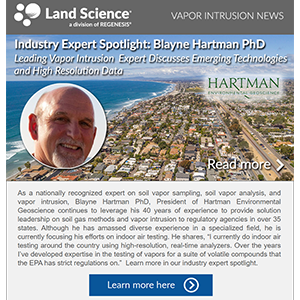


 Nitra-Seal employs a chemically resistant nitrile latex. Nitrile is recognized throughout the environmental engineering industry as being chemically resistant and is often used in personal protective equipment when working on hazardous waste sites (e.g. nitrile gloves). Laboratory testing has shown up to 10X higher chemical resistance when compared to any other vapor barrier material on the market. Nitra-Seal has been lab-tested and proven to be highly effective against VOCs like chlorinated solvents and petroleum contaminants, and methane. Learn more about Nitra-Seal using the below.
Nitra-Seal employs a chemically resistant nitrile latex. Nitrile is recognized throughout the environmental engineering industry as being chemically resistant and is often used in personal protective equipment when working on hazardous waste sites (e.g. nitrile gloves). Laboratory testing has shown up to 10X higher chemical resistance when compared to any other vapor barrier material on the market. Nitra-Seal has been lab-tested and proven to be highly effective against VOCs like chlorinated solvents and petroleum contaminants, and methane. Learn more about Nitra-Seal using the below.






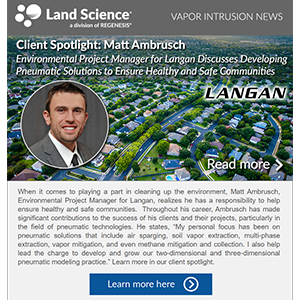

 Dora Taggart
Dora Taggart Sam Rosolina, PhD
Sam Rosolina, PhD Tom Szocinski, CEP
Tom Szocinski, CEP



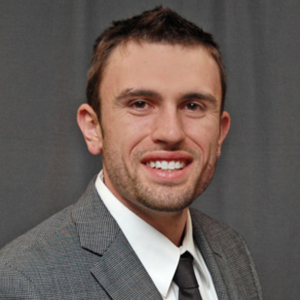
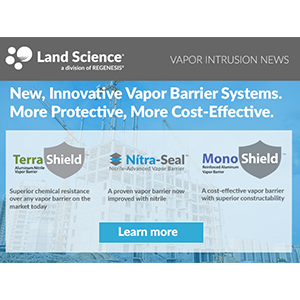



 Kristen Thoreson, PhD
Kristen Thoreson, PhD
